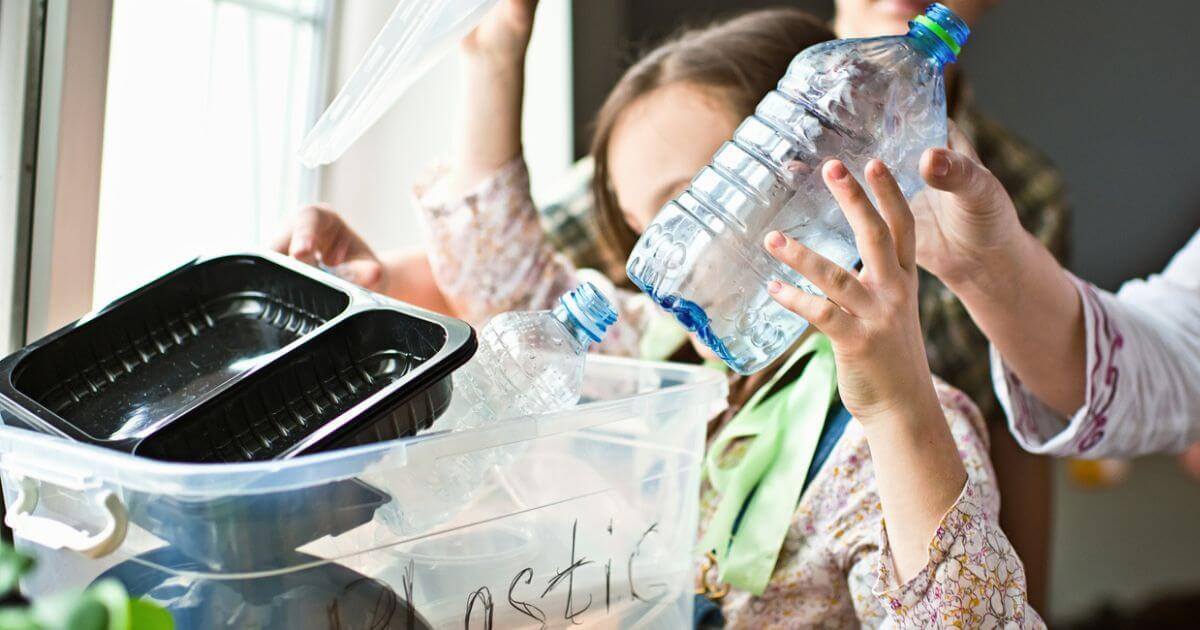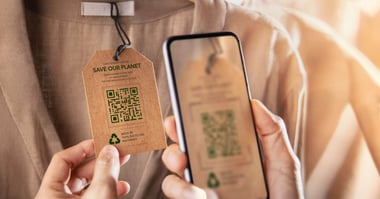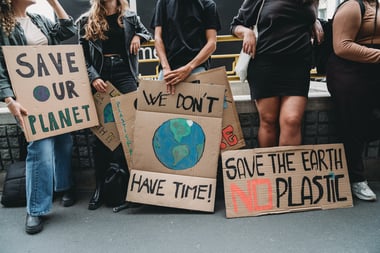Greenwashing has a shelf life - and the EU is coming for it. When? We're not entirely sure. The ping pong ball that is the Green Claims Directive has had rocky summer.
TL:DR - What’s the latest on the Green Claims Directive?
On the 20th June, EU Commission withdrew support at the eleventh hour, pausing trilogue talks over fears the law would burden ~30 million micro‑businesses.
Then on the 30th June, according to a statement from a Commission spokesperson clarified that is "has not been withdrawn by the European Commission."
Read more on the latest u-turn. via Esg.today.com [link updated 2 July 2025]
What should your brand do now?
Our advice is to read through this overview and make the right decision for your brand.
Here at CleanHub, we are right in the middle of the process of getting a certified trust mark for our badges. The process is sticky and bureaucratic, and not altogether a walk in the park. But we believe that transparency and protecting consumers against greenwashing is still important.
So our tip: Proactively prepare, even without timeline on when the regulation will be in place.
Or, keep checking back as we update this blog post, with the latest updates on the directive.
EU Green Claims Directive: Everything you need to know
As you may already know, the European Union (EU) has proposed the Green Claims Directive (aka GCD), taking a firm stance against greenwashing.
The goal of the Green Claims Directive? To protect consumers from misleading environmental marketing practices. [European Parliament].
The new legislation will make it mandatory for businesses to back up any environmental claims with solid evidence.
If your company operates in the EU or sells products there, then the following blog post is for you.
|
We are here simply to educate and inform. We strongly recommend consulting a qualified legal advisor and reviewing the Green Claims Directive in detail to ensure compliance with all applicable regulations. |
What is the Green Claims Directive?
The Green Claims Directive is a proposed legislative framework designed to tackle misleading sustainability claims. Although the bill is still in the negotiation phase, once its passed, it will ensure any environmental statements made by businesses are verifiable, clear, and backed by science.
The Directive is designed to protect consumers from greenwashing by introducing:
- a checking system,
- third-party auditing,
- and penalties for companies that aren’t compliant.
The goal is to protect consumers from false or exaggerated environmental claims while encouraging genuinely sustainable practices.
Examples of green claims
- "We are a carbon-neutral company"
- "Our packaging is made up of 50% recycled plastic"
- "Our company's environmental footprint has reduced by 30% since 2020"
.gif?width=200&height=200&name=200w%20(2).gif)
The Green Claims Directive: Key Measures
Here’s a snapshot of the main takeaways you should be aware of:
- Evidence-based claims – Environmental claims must be substantiated by recognized scientific methods and verified by an independent third-party.
- Clear and specific wording – Claims need to be backed up with scientific evidence. So vague terms like “eco-friendly” or “green” are out! You need to be specific and clear.
- Carbon offsetting transparency – If you claim to be carbon neutral, you need to be able to show the percentage of total greenhouse gas emissions that have been offset.
- Stricter rules on eco-labels – Any product labels that make an environmental claim will have to be assessed, backed up with evidence, and verified by a third-party
If this kind of talk gets you in the mood, then you can geek out on the full Directive here in the Green Claims Directive proposal. Enjoy.
NOTE: The Green Claims Directive proposal is a complex piece of legislation, so it’s worth getting support from a legal advisor to act on this accordingly.
How should your business assess its environmental claims?
The current draft of the Directive simply states that businesses will need to assess their claims — it doesn’t state a specific method for this yet. Useful, huh.
It does, however, state that the assessment should:
- Rely on recognized scientific evidence and state-of-the-art technical knowledge
- Demonstrate whether the claim is accurate for the whole product or only for parts of it
- Demonstrate the significance of impacts, aspects, and performance from a life-cycle perspective
- State whether the claim is equivalent to requirements imposed by law
- Take all significant impacts into account to assess the performance
- Provide information on whether the product performs environmentally better than what is common practice
- Identify whether a positive achievement leads to a significant worsening of another impact
- Provide transparent information on offsetting, stating whether it relates to the reduction or elimination of carbon emissions, and how this offsetting is achieved
In short, they aren’t messing about with this.
How will the Green Claims Directive regulate environmental labels?
The GCD will evaluate environmental labels, stopping the proliferation of public and private labels and ensuring transparency and robustness of labelling schemes.
Labels on products, such as recycling, compostable or biodegradable labels, carbon-neutral, and forestry certification labels will be under scrutiny to bring more transparency to labelling systems.
The ultimate goal? Empower consumers to make sustainable purchases with confidence and know how to dispose of products correctly. Which quite frankly, we should all be behind as consumers ourselves.
But (hopefully) by streamlining the variety of environmental labels in the market, it should improve their credibility when used properly.
When will it be implemented?
Since the legislation is still in the works, specific enforcement dates haven’t been finalized yet. UP until June 2025, we were expecting a final agreement later this year. But as of June 2025, this has seriously changed things.
Here’s a timeline of what we know so far:
- 17 June 2024: The Council approved a general approach and inter-institutional negotiations took place
- January 2025: The draft of the Directive is being negotiated by the European Parliament and Council — a final agreement is expected before the end of 2025
- June 2025: Negotiations on the final text of the draft law were due to conclude in a meeting scheduled for 23 June 25. However, the EU Commission withdrew support at the eleventh hour, pausing trilogue talks over fears the law would burden ~30 million micro‑businesses
- 2027: If the Directive is still adopted in 2025, it is expected to become binding in 2027, meaning businesses will need to be compliant by then
But who knows. And hey, why wait? Let’s drop the greenwashing and help consumers make better decisions aligned to what they care about.
How will the measures be enforced?
Any companies found to be non-compliant with the new requirements will receive a fine as punishment.
Yikes. Serious talk.
According to the draft of the Directive, members of the EU will designate responsibility to authorities that will monitor companies’ compliance, and investigate and enforce the Directive’s requirements.
Member States could either adopt the Directive’s rules on penalties or opt to continue using the current mechanism in place to combat unfair commercial practices.
Third-party verification
Before any environmental claims or labels are used in commercial communication, they’ll have to be verified and certified by a third-party verifier to make sure they comply with the Directive requirements.
This third-party verifier will be an officially accredited body with no conflicts of interest. Once the claim has been verified, the third-party auditor will decide whether or not to issue a Certificate of Conformity.
This certificate will be recognized across Member States and will allow companies to use the claim in commercial communication.
Which businesses will be impacted by the Green Claims Directive?
Any companies operating in a Member State of the EU, with more than 10 employees and an annual turnover of over €2 million, will be impacted by the Green Claims Directive. This also includes non-EU businesses that are selling into the EU market.
Micro-enterprises with fewer than 10 employees, and an annual turnover of less than €2 million, are not subject to the environmental claims' requirements — but they can obtain a Certificate of Conformity if they meet those standards.
What will happen if your business isn’t compliant?
Any companies found not to be compliant with the EU Green Claims Directive will be subject to one of the following penalties:
- Fines: The maximum amount will be 4% of the company’s annual turnover in the Member State, or any Member State concerned with the case. It’s also worth bearing in mind that fine amounts will increase for repeated violations
- Confiscation of revenues: If a company gains revenue from a transaction involving products associated with non-compliant environmental claims, the authorities have the power to confiscate those earnings
- Temporary exclusion from public procurement: Companies in violation of the Directive may face exclusion from public procurement processes and access to public funding (for a maximum period of 12 months). This includes exclusion from tendering procedures, grants, and concessions
How to make sure your business is compliant
There are a number of steps you can take to prepare for the new Directive, including:
- Auditing existing claims – Start by reviewing your ESG communications and marketing materials, and ensure they are backed by credible evidence
- Ensuring all communications are transparent – Clearly communicate your claims in a way that’s easy for consumers and regulators to understand. After your audit, you should have identified any gaps in your communication — now it’s time to rectify this and back up all claims with evidence
- Preparing for new eco-label standards – If your products carry a sustainability certification, check whether they meet the upcoming EU requirements
- Getting ready for implementation – Make sure you have a clear plan of how you’ll roll out these changes in time for the Directive’s deadline. And remember, all claims will need to be assessed by a third-party verifier before being marketed
So what do you do next?
You have a few options.
- Bury your head in the sand until the heavies are knocking at the door (we don’t recommend this option).
- Wait until the final agreement is signed and then start taking action (again, we don’t recommend this. You’ll likely pay a premium for any legal support you may require)
- Get the ball rolling now...
Your brand checklist
- Start with the key measures that we outlined here
- Gather the key personnel who will be involved and assign a project manager
- Monitor UK, FTC, EU law changes monthly
- Audit current environmental claims
- Prep third‑party support or LCA data
- Agree a roadmap and set key deadlines to make sure everyone knows what is required and when
our brand checklist”
With the proposed new law on green claims, the EU is taking action to address greenwashing, and protect consumers and the environment.
Make Verified Green Claims with Confidence
The Green Claims Directive is raising the bar for corporate sustainability—vague promises won’t cut it anymore. With CleanHub, you can prove your plastic reduction efforts with third-party verified impact data, ensuring your brand stays compliant and credible.
Don’t risk greenwashing—take action today.
✅ Track & trace plastic recovery
✅ Get certified, transparent impact reports
✅ Build trust with verifiable sustainability claims
Ready to make sustainability claims that stand up to scrutiny? Get started with CleanHub today. Book a call and speak to our experts about getting started.


-3.png)




.webp?width=380&name=Refill%20product%20(1).webp)


.webp?width=380&name=DEI%20(1).webp)
.webp?width=380&name=Beach-litter%20(1).webp)
.webp?width=380&name=Diversity-and-inclusion%20(1).webp)

